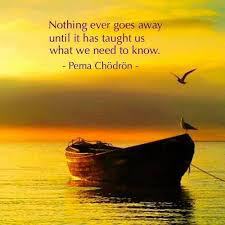“I don’t want to feel this way anymore”
“If I let myself cry, I don’t think I’ll ever stop”
“I want the pain to just go away”
It is common for a person starting counselling to spend the first few sessions recounting the stories that have brought them to see me; why they feel stress, anxious, depressed; who are the key players in their issues; what is causing the obstacles they are encountering. And then, the words dry up. It can often feel like a ‘make or break’ moment in the counselling relationship – it is as if having told me their story they wait in anticipation “so, what next?”. Maybe they want the answers from me, maybe they want me to take the problem away: but what they probably don’t want is the invitation that I offer – to go beneath the stories, under the words and rather connect with the feelings and emotions.
It is important that we have the chance to tell our story. It is important to feel heard. Very often, clients find a lot of relief in just sharing their load. One client of mine recently told me I provided them space to ‘scream and shout’: as no-one else would be able to tolerate it. In my experience though, long-lasting change comes from being able to go beyond the words and touch the feelings underneath – as Fritz Perls used to say, “Lose your mind and come to your senses.” For every story we can tell about someone making us angry, underneath there is pain, hurt or rejection.
As the client and I discuss the issue and their attempts to talk and think themselves out of it they come to understand how retreating in to their heads (and ruminating on the story) isn’t moving them anywhere – in fact it can get them more entrenched as they start to believe the stories are actually true (of course, they ARE true to them, but there is a truth for each and every person on the planet and we can’t ALL be right!). Re-telling the story tends to solidify the situation, and in the worst cases we can over identify with it – very often the reason depression sneaks up on people. But even when there is an intellectual realisation that they need to do things differently, there is always* resistance to questions I pose such as “so how does that feel as you tell me that? where can you sense it in your body?” Very often I see the tears well up, the hand may move to the chest – but almost immediately the silence is broken with the words “I think I feel”…commentary re-commences, it is just too painful to stay with the feelings and the intellect comes in to protect like a white knight.
I connect with this struggle on a personal level. For many years I relied on my ability to think my way out of pain – but actually I now see that my thoughts were a layer over the hurt inside. Historically, thinking kept me safe; but it also kept me living on a knife edge. It is stressful trying to stay safe, and it stopped me from living, I mean truly experiencing life. I didn’t want to live a numbed out life anymore. Therapy helped me see that the very strategies that once kept me safe were now out of date and were the shackles that held me back.
“You are allowed to feel messed up and inside out. It doesn’t mean you’re defective – it just means you’re human.”
― David Mitchell, Cloud Atlas
 If to feel is to be human, what stops us wanting to feel? Where have we learnt that feeling is inferior to thinking? Plain and simple, feeling is painful – why wouldn’t we want a smooth ride, why wouldn’t we want to pad ourselves with cotton wool and keep the hurt out? When I talk with client’s about their experience of pain, the main resistance to turning toward the feelings is one of fearing it will catapult them in to an abyss. “If I let myself feel that, the emotion will overwhelm me”; “If I let myself cry, I’ll never stop”. Crying will break open the dam, an irreversible experience of pain. There is fear of paralysis; and ultimately a fear of annihilation and oblivion.
If to feel is to be human, what stops us wanting to feel? Where have we learnt that feeling is inferior to thinking? Plain and simple, feeling is painful – why wouldn’t we want a smooth ride, why wouldn’t we want to pad ourselves with cotton wool and keep the hurt out? When I talk with client’s about their experience of pain, the main resistance to turning toward the feelings is one of fearing it will catapult them in to an abyss. “If I let myself feel that, the emotion will overwhelm me”; “If I let myself cry, I’ll never stop”. Crying will break open the dam, an irreversible experience of pain. There is fear of paralysis; and ultimately a fear of annihilation and oblivion.
Have you ever tested this out? Have you allowed yourself to be touched by something sad and allow it to take you over, to truly sob? Chances are if you have found the courage to turn toward your experience, fully, you will have noticed that the crying, the sobbing doesn’t last forever…and in fact great relief can come.
Now this will sound strange for me to reveal this, as I am a purveyor of mindfulness meditation – but the first reaction I had to starting a meditation practice was falling in to depression. For the first time in my life I connected to my inner world on a deeper level – and it froze me. I lived in a fog. However, this was the first step I needed to go through – my hopelessness turned to sadness**. When I started therapy, I learned to connect to- and understand the hurt. My mediation practice at this time was a great bedfellow to the therapeutic work – as it allowed me to sit with the emotions – to feel the pain and learn that I COULD survive it.
“To be free, to come to terms with our lives, we have to have a direct experience of ourselves as we really are, warts and all.”
― Mark Epstein, The Trauma of Everyday Life
The Buddhist teachings (as with many Western therapeutic models) reveal that true liberation from comes from deep acceptance of ourselves – and I mean the full range of who we are, the dark the light, the happy the sad. Gestalt therapy (which is said to have received input from Zen Buddhism) in fact speaks of the “paradox of change” – clients will come to therapy often wanting change; but relief eventually comes from the acceptance of ‘what is’. When we turn towards our pain, the struggle stops. Pain is not the problem, the struggle is.
Someone who writes a lot about pain – and turning towards rather than away from it – is the Buddhist teacher Pema Chodron. She suggests:
 Feel the feelings and drop the storyline. And this is where a meditation practice helps us’compost’ our experience. In an environment of relative safety (away from the reactive situation that caused the pain) we can sit and just let the sensations flow through us
Feel the feelings and drop the storyline. And this is where a meditation practice helps us’compost’ our experience. In an environment of relative safety (away from the reactive situation that caused the pain) we can sit and just let the sensations flow through us
And it is this allowance of ‘flow’ that brings the healing. Ordinarily, we get caught up by the emotion, or ‘hooked’ (Chodron uses the Tibetan word ‘shenpa’). Emotion is simply energy – if we let the energy rise – and trust it won’t last forever – it will subside. We only get ‘hooked’ when that energy becomes solid, when we make it ‘real’. Linking this with what I say above, it is often the words and story that lock the energy down and stop the flow.
Of course, we all experience pain in many different ways. And, I certainly wouldn’t recommend turning on the feeling tap in extreme states such as trauma***. The ‘turning toward’ processes of therapy and meditation need to be approached with caution. With care and a compassionate attitude to ourselves, we can un-learn the ‘speaking over’ our experience. To drop the words and feel what is underneath; to feel the richness of this human life.
*I rarely generalise, but I have yet to work with a client who gets excited about my offer to explore the felt sense!
**Yes, that IS progress. Wrongly, people confuse depression with sadness – the former is listlessness, the latter a much richer emotion
***Trauma is actually a quite sensible strategy the body has adopted – it is the detachment of the event from any feeling. Re-uniting the narrative and feelings to re-enact the event needs to be a carefully monitored process under the supervision of a trained professional.

